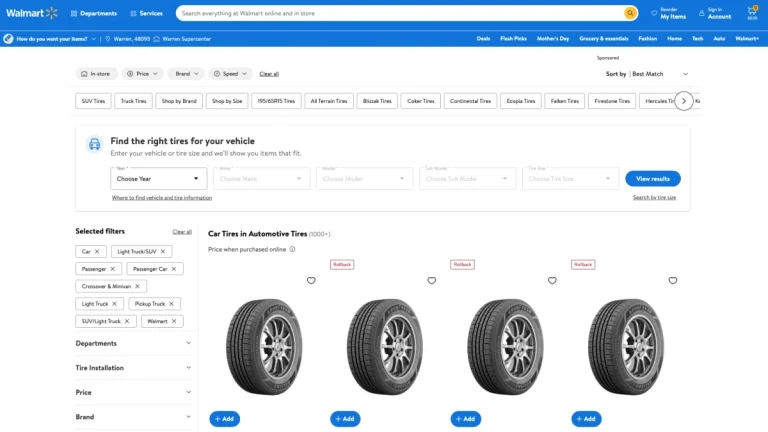How Long Can You Drive On Bald Tires?
Driving on bald tires might seem like pushing your luck a bit too far. These worn-out companions, with their diminishing tread depths, silently compromise your safety on the roads. You might wonder, how long can you truly drive on bald tires before it becomes a risky gamble? Well, let’s unravel this vehicular conundrum.

Discover the risks of driving on bald tires and how long you can safely navigate the roads with these worn-out treads. Understanding the hazards of worn tires and their impact on safety is crucial for any driver.
What Are Bald Tires?
Bald tires refer to worn-out tire treads that have significantly lost their original depth and traction. Over time and use, the tread on tires wears down, reducing their ability to grip the road surface. This wear can be due to various factors like driving habits, road conditions, and tire maintenance.

Visually, bald tires appear smooth without the usual tread patterns, resembling a lack of hair or baldness. This diminished tread depth poses serious safety risks, compromising traction, handling, and the tire’s ability to disperse water, especially in wet or slippery conditions, making them a hazard on the road.
How to Check for Bald Tires?
To check for bald tires, conduct a simple tread depth test using a penny. Insert the penny into the tire’s tread groove with Lincoln’s head facing down. If the top of Lincoln’s head is visible or if the tread doesn’t reach the top of his head, it indicates inadequate tread depth and potential baldness.
Additionally, inspect tires for uneven wear patterns, cracks, or bulges on the sidewalls, all of which suggest tire wear and the need for replacement. Regularly monitoring tire condition and using tools like tread depth gauges can ensure timely replacement and maintain road safety.
Why Is It Dangerous To Drive With Bald Tires?
Driving with bald tires poses significant risks due to compromised traction and handling. The reduced tread depth diminishes the tire’s ability to grip the road surface effectively, especially in adverse weather conditions like rain or snow. This lack of traction leads to longer braking distances and increased chances of skidding or losing control while turning or maneuvering.
Bald tires also struggle to disperse water on wet roads, heightening the risk of hydroplaning. Moreover, the structural integrity of bald tires is compromised, making them more prone to blowouts, particularly at higher speeds. These dangers highlight the critical importance of maintaining proper tire tread depth to ensure optimal road grip and overall safety while driving.
What Can Happen If You Drive On Bald Tires?
Driving on bald tires can lead to a myriad of hazardous situations. One of the primary risks is compromised traction. Bald tires lack the necessary tread depth to maintain grip on the road, especially in adverse weather conditions like rain, snow, or ice. This diminished traction increases the braking distance, making it harder to stop quickly and potentially leading to accidents. Moreover, bald tires are more prone to skidding, especially during sudden maneuvers or turns, as they struggle to maintain contact with the road.
Another significant concern is hydroplaning. When roads are wet, bald tires fail to channel water away effectively, increasing the likelihood of hydroplaning. This occurs when a layer of water builds up between the tires and the road, causing the vehicle to lose traction entirely, leading to a loss of control.
Furthermore, bald tires are more susceptible to punctures and blowouts. The worn-out tread and weakened tire structure make them more vulnerable to damage from road debris or sudden impacts, increasing the risk of a blowout, which can be extremely dangerous, particularly at high speeds.
Overall, driving on bald tires significantly compromises vehicle safety, increasing the chances of accidents due to reduced traction, handling issues, and an increased risk of blowouts. Regularly checking and replacing tires when they become worn is crucial to ensure road safety and prevent potentially life-threatening situations on the road.
Can Bald Tires Explode?
Bald tires themselves do not typically explode, but their worn-out condition can contribute to tire blowouts. As tires wear down, the structural integrity weakens, making them more susceptible to sudden failures. When driving on bald tires, especially at high speeds or under excessive loads, the tire’s weakened structure might not withstand the pressure, leading to a blowout.
Additionally, if the tires have been significantly worn to the point of exposing the internal components, such as the steel belts or cords, the increased heat generated during driving can further weaken the tire, increasing the risk of a blowout. While not an explosion in the traditional sense, a tire blowout can be sudden and forceful, causing loss of control and potentially dangerous situations on the road. Regular tire maintenance and timely replacement of bald tires are crucial to avoid such risks.
Why Do Tires Go Bald In The Middle?
Tires can go bald in the middle due to overinflation. When a tire is consistently over-inflated, the center of the tire bears a disproportionate amount of the vehicle’s weight. This excess pressure causes the center of the tire to wear out more rapidly than the edges, resulting in a bald or flattened area in the middle. Overinflation leads to decreased contact of the outer edges of the tire with the road surface, causing uneven wear patterns. Monitoring and maintaining the recommended tire pressure as indicated by the manufacturer can help prevent this issue, ensuring even wear across the tire’s surface and prolonging its lifespan.
Conclusion
In conclusion, driving on bald tires is a risky proposition that significantly compromises safety on the road. The diminished tread depth reduces traction, impairs handling, and increases the likelihood of accidents, especially in adverse weather conditions.
Bald tires are more prone to hydroplaning, blowouts, and skidding, posing dangers to both the driver and others on the road. Regularly checking tire tread depth and overall condition is vital, ensuring timely replacements to maintain optimal road grip and safety. Remember, prioritizing tire health is key to a smoother and safer journey on every drive.






